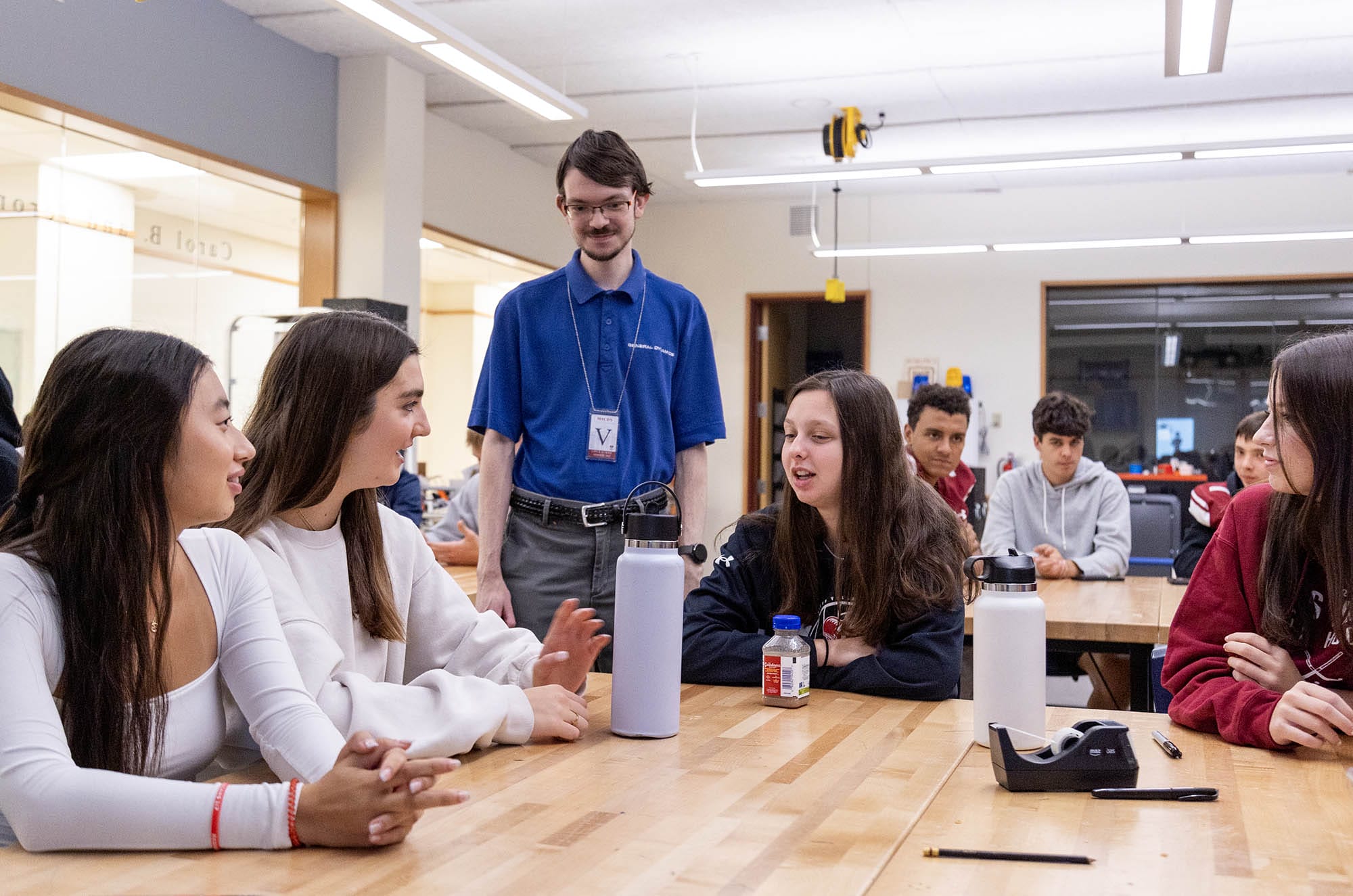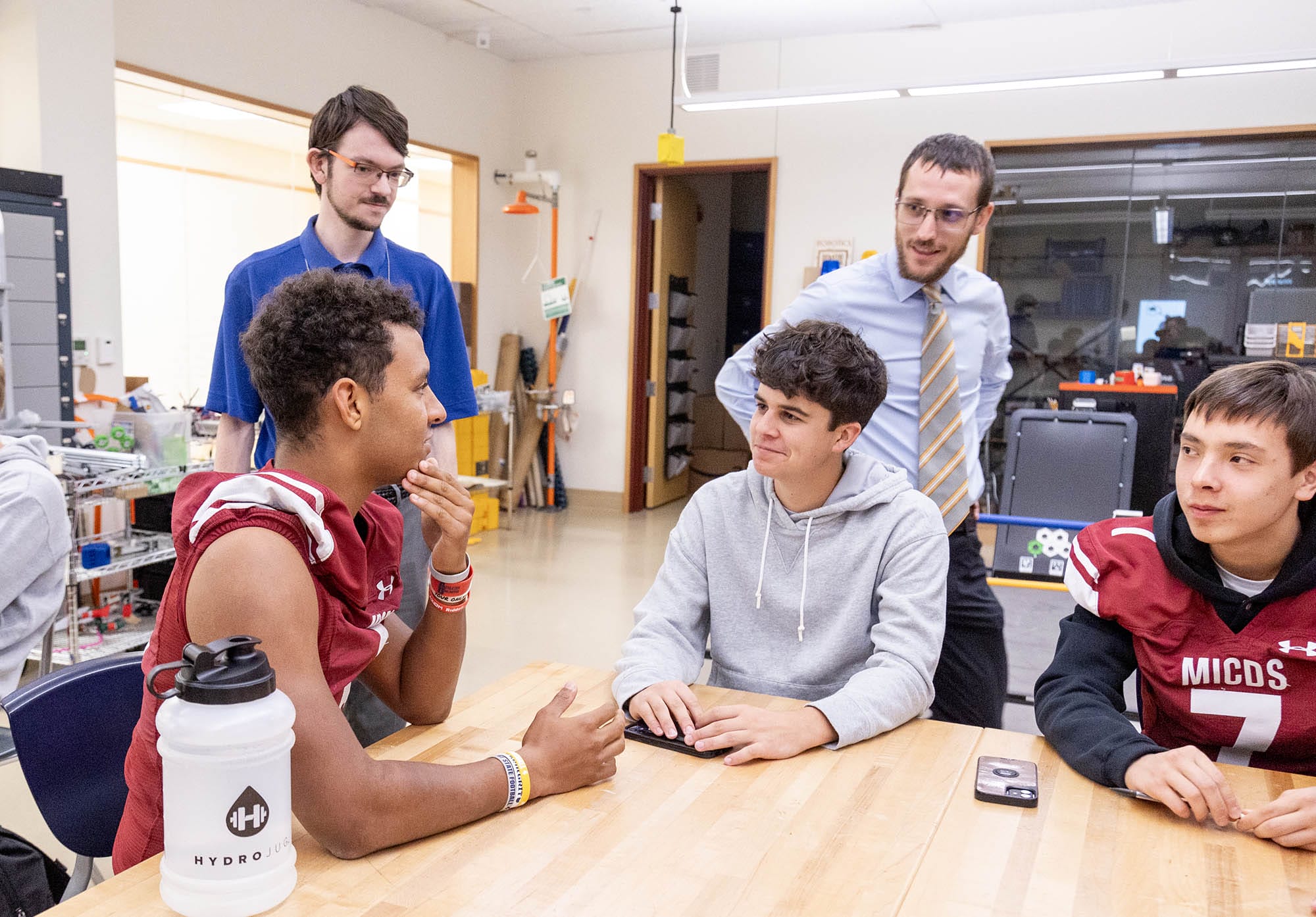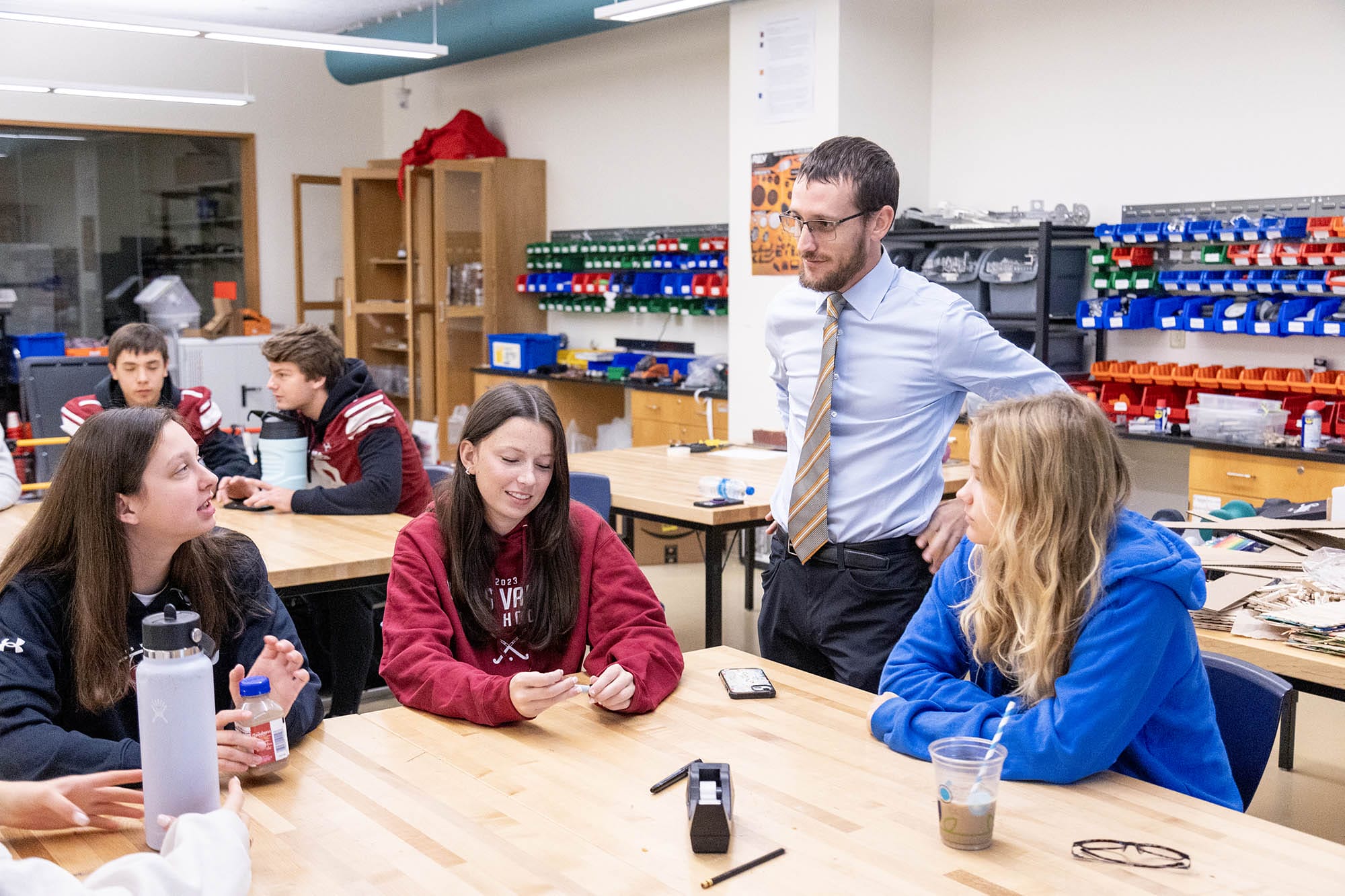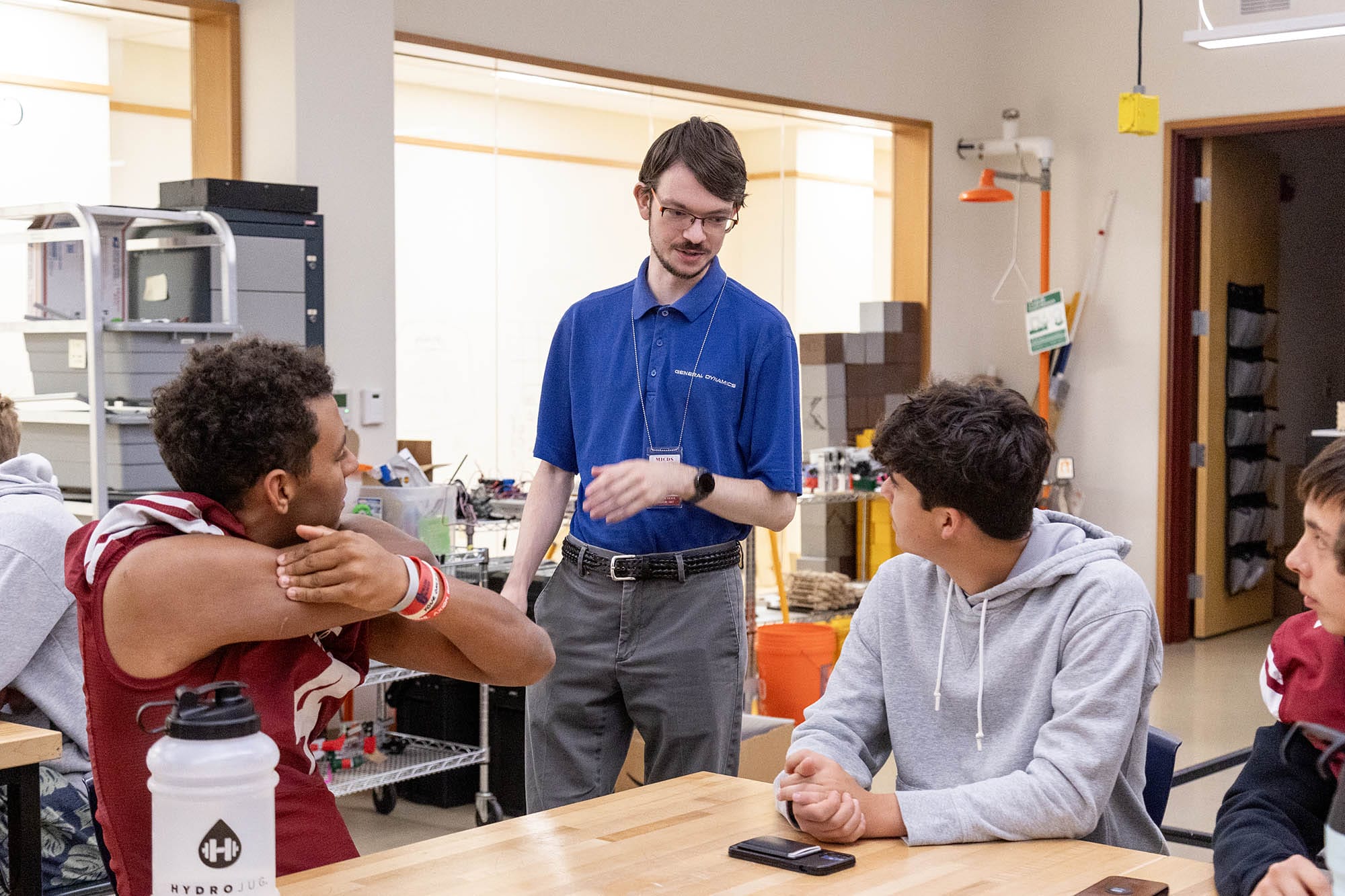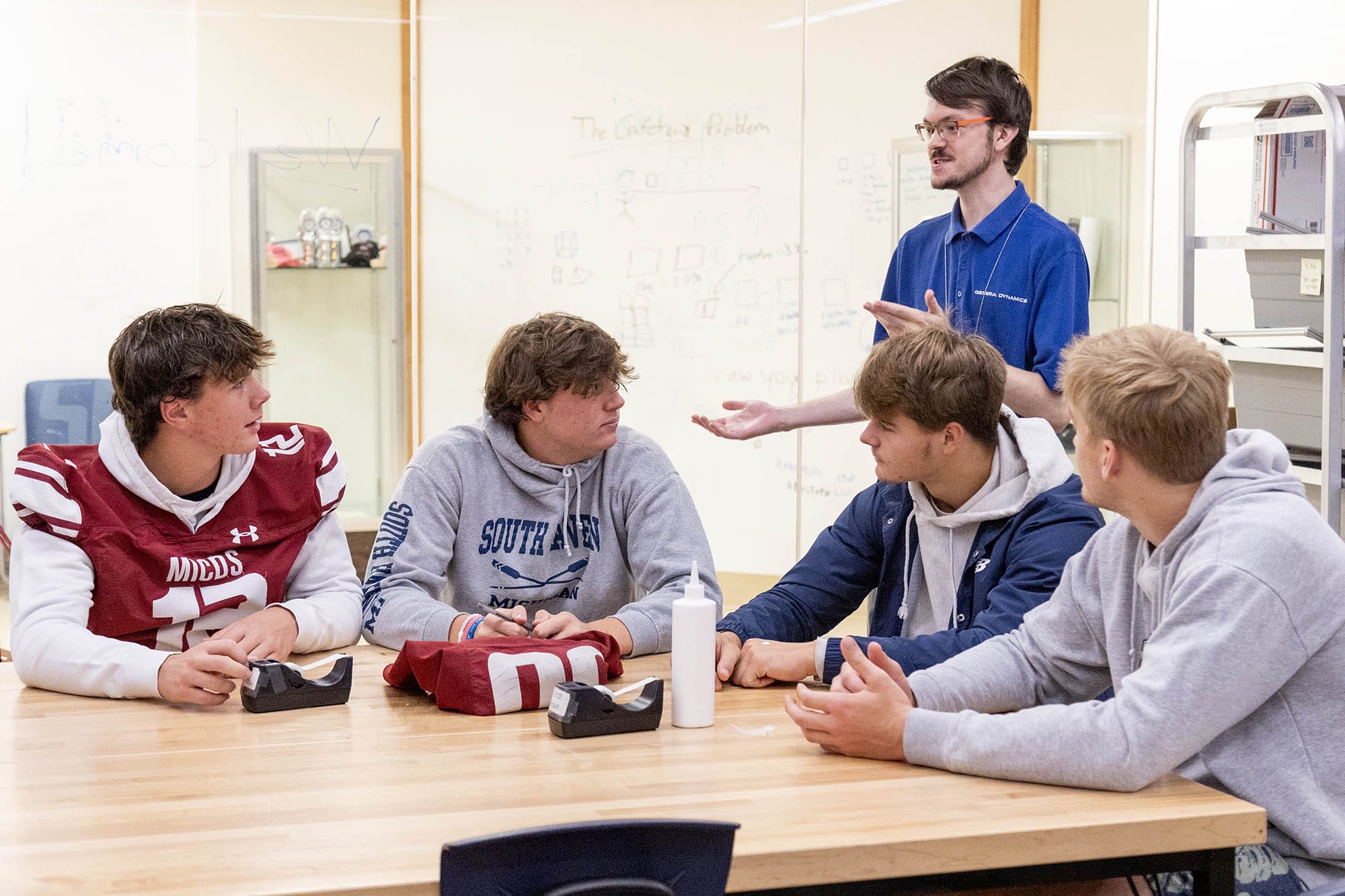Upper School Science Teacher Travis Menghini likes to ensure his students have a peek into the „real world“ of engineering while learning and applying concepts in the lab. One way he does that is to invite guest speakers to his classroom. They share their background, history, and experience and talk about their day-to-day jobs.
Last week, Menghini and his students welcomed Adam Waller, who has a BS in Aerospace and Mechanical Engineering from Missouri S&T and who works at General Dynamics. Waller was there to talk „quality“ with these burgeoning engineers.
What is quality? Waller started his lesson by asking the class to discuss their definitions of quality at their tables. The conversation was lively and full of great examples. One student pointed to her water bottle, sharing that it’s been dropped and even run over and is still in great condition and does its job. Waller then provided a formal definition: quality is a measure of excellence or a state of being free from defects, deficiencies, and significant variations. He posed the question: What is an acceptable fail rate? Is it one in 100? One in a million?
Companies rely on a number of different resources when considering quality standards. From government agencies like the Food & Drug Administration, the Environmental Protection Agency, and the Federal Aviation Administration to international organizations like the American National Standards Institute, the International Organization for Standardization, and the American Society for Testing and Materials, there are many guidelines (and sometimes laws) that help businesses develop their own standards for quality.
Once standards are established, how can engineers ensure they are being met? Waller outlined four types of inspection: measurement, visual, non-destructive testing (NDT), and functional testing. He provided an example from his own company, using ammunition. Visual inspection can indentify workmanship issues such as a bad stencil or sloppy paint. Measurement and functional testing will show whether a projectile is misaligned and check for accuracy and velocity. Those issues can lead to critical quality concerns such as ammunition not chambering properly.
Finally, Waller emphasized that quality has a cost, but investing in properly quality checks and procedures can save a company money and time in the long run in addition to ensuring that products are safe for customers.
„I think that the guest speaker helped me understand more about the work that goes on behind the scenes when making certain products, and how much of an impact a seemingly insignificant change can have,“ said Devon Catsavis ’24. „I also learned more about his field of work and how many trials they have to put their products through to ensure they are up to quality standards.“
„Quality is something I’ve thought about before, but never in a truly serious manner. As Mr. Waller presented to us, though, I began to consider the crucial role quality plays in our everyday lives,“ said Zoe Zlatic ’24. „Now that he’s spoken with us, I look at products differently, and I have a much better understanding of what a high-quality product really means. I’m grateful we were able to hear from him and learn more about a topic that is so integral in engineering and our daily lives.“
Menghini’s engineering students are now well-prepared to consider quality when designing future projects. Thank you, Mr. Waller, for spending time in our lab!
